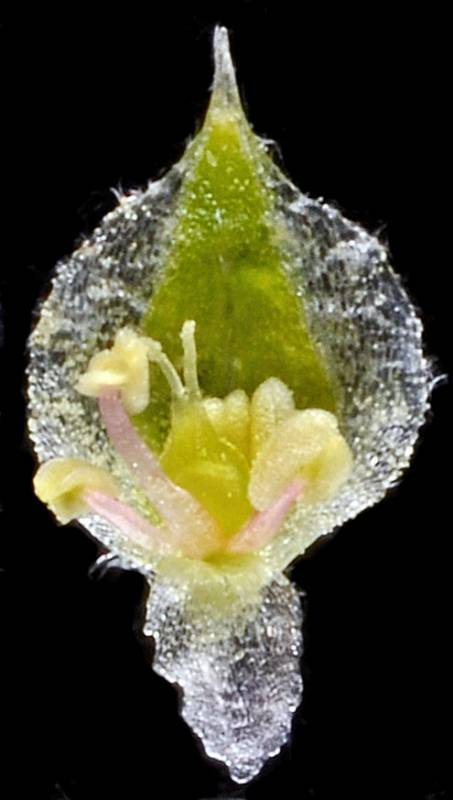Hosted by the University of Washington Herbarium, Burke Museum
Publication: Novon. 5: 345, fig. 1A. 1995.
Origin: Native
Herbarium search: CPNWH
Notes: Our most common species in Washington, on the banks of the Snake and Columbia Rivers. Putative hybrids with C. villosum reported in FNA.
FNA4: "Corispermum pacificum seems to be closely related to Siberian C. crassifolium Turczaninov and C. maynense Ignatov. The latter species occurs in the northeastern Russian Far East and may be expected to occur in Alaska. Corispermum pacificum differs from C. maynense by its usually more robust habit, and its wing rounded (rarely rounded-truncate or indistinctly emarginate, but not triangular) at apex. From C. crassifolium it may be distinguished by the constant presence of perianth segments, and more flattened black mature fruits. Corispermum pacificum probably also occurs in adjacent regions of British Columbia. Corispermum pacificum is placed in subsect. Crassifolia (S. L. Mosyakin 1997). This subsection seems to be of Siberian origin, with its central species, C. crassifolium, being closest to the hypothetic ancestral taxon. The presence of perianth segments in C. pacificum may be explained by ancient hybridization with representatives of subsect. Pallasiana.
Reproductive isolation between the sympatric species of Corispermum may be achieved by different flowering periods. Occasional hybrids between C. pacificum and C. villosum are similar in their habit to C. pacificum in having usually broad leaves and rather dense inflorescences but they have mostly aborted fruits suggesting that C. pacificum and C. villosum are taxonomically distant species."
References:
Last updated 6/14/2023 by David Giblin.

